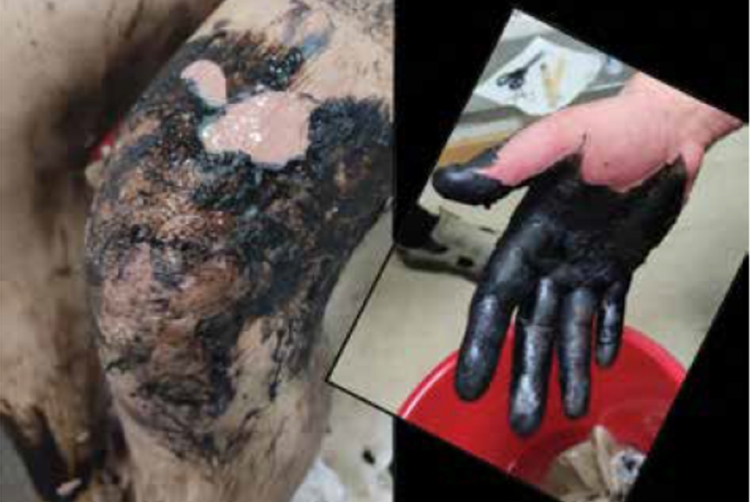Don’t forget personal protective equipment (PPE) when carrying out maintenance tasks on board a ship an expect the unexpected. The Nautical Institute gives this advice in its latest Mars Report, in which an engineer suffered hot sludge burns.
The Nautical Institute gathers reports of maritime accidents and near-misses. It then publishes these so-called Mars Reports (anonymously) to prevent other accidents from happening. A summary of this incident:
The main engine on a bulk carrier was switched over to very low sulphur fuel oil (VLSFO) to comply with regulations. Once the engine was operating on VLSFO, the sludge discharge line of the oil separator frequently clogged, generating a “separator fail” alarm on the alarm panel. To mitigate the problem, it was decided that the oil separator was to be cleaned twice a day.
In the evening hours, the engineer on duty received a “separator fail” and a “fuel oil bowl leak” alarm on the computer. The vessel was rated as UMS (unattended machine space) and there were no engineers in the machinery space at the time. Experience to date indicated that this alarm was a consequence of the contamination and clogging of the separator bowl at the discharge line. As per procedures, the engineer informed the bridge that he was going to the engine room.
Procedures also specified that two crew should always enter the engine space together. Despite this, the engineer on duty entered the space alone, and did not put on his coveralls and gloves as he entered the engine room – again contrary to procedures. Having transferred to the standby separator and shut the alarming separator, he opened the plug of the inspection hole of the sludge discharge line to verify the condition. The discharge line was completely blocked, so this did not decrease the pressure between the blockage and the bowl opening. Hot (40°C) sludge oil gushed out of the inspection hole and covered the engineer’s arms and legs.
The victim called for assistance and other crew arrived. They attempted to wash the sludge off the engineer’s hands at the washstand, but the sludge was sticking to his skin. He was escorted to the ship’s hospital and pain-killers were prescribed. After consultation, the master decided to evacuate the victim at the nearest port, approximately 250 nm from the vessel’s location. In the shore hospital, it was twelve per cent% of the victim’s skin surface had been covered in sludge, mostly on his arms and legs.
Also read: Junior engineer suffers severe burns in boiler accident
Investigation findings
The investigation found, among other things, that:
- A long sleeved overall and leather gloves could have greatly reduced the amount of sludge that contacted the victim’s skin.
- The regular clogging of the fuel oil separator on board was probably due to the cold flow properties of the particular blend of VLSFO in use. Mitigating action was taken to keep the process running by cleaning the oil separator twice a day, but the source of the problem had not been dealt with. A more detailed analysis of the specific blend of VLSFO, and in particular its cold flow properties, could have solved the separation problems with this blend of fuel.
- Cleaning the separator was not a standard job on board. It was decided to carry this out twice a day to deal with the new batch of fuel, but no further risk assessment or safety measures were implemented to mitigate the risks associated with this job.
Also read: No lockout/tagout results in burns for engine room crew member
Advice from The Nautical Institute
- Expect the unexpected – in this case, that the discharge line was completely blocked.
- The discharge line was not equipped with a pressure gauge, since the sludge inside the discharge line is normally not under pressure. It was unusual and unexpected that the sludge was under pressure after switching off the separator.
- This is yet another example where lack of proper PPE was an aggravating factor for the negative consequences.
Also read: Always carry out a risk assessment when working with hot bitumen
Mars Reports
This accident was covered in the Mars Reports, originally published as Mars 202241, that are part of Report Number 360. A selection of this Mars Report was also published in SWZ|Maritime’s November 2022 issue. The Nautical Institute compiles these reports to help prevent maritime accidents. That is why they are also published (in full) on SWZ|Maritime’s website.
More reports are needed to keep the scheme interesting and informative. All reports are read only by the Mars coordinator and are treated in the strictest confidence. To submit a report, please use the Mars report form.








